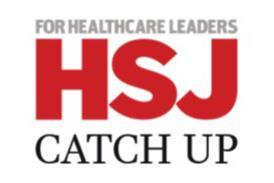We need to move beyond historic reporting for board review to real time reporting, says Marc Farr

Many readers will be familiar with The Healthy Board – Principles for good governance, which sets out best practice for NHS trust boards.
The report describes the requirement for the board to review performance intelligence. It says this information is needed to provide “an accurate, timely and balanced picture of current and recent performance – including patient, clinical, regulatory and financial perspectives”.
The intention is that the performance review will highlight variation and the board will then carry out further detailed investigation.
Information departments have traditionally played their part by collecting large amounts of data and preparing detailed papers for board consideration each month.
‘By the time the information reaches the board it is too late to have any operational significance and is simply a signposting exercise’
Although this historic review can be useful, my concern is that by the time the information reaches the board it is too late to have any operational significance and is simply a signposting exercise.
The question I keep coming back to is does current information about performance have a place in the formal board reporting cycle?
Changing landscape
The health informatics landscape is changing fast and in most trusts performance information can be reviewed in real time. This means board members, such as the chief executive and operational staff, can have access to this information straight away.
This changes the nature of decision making from being reactive to being proactive. Decisions can be made on the spot, rather than waiting for variation to be reported to the board several weeks later and then decisions made.
For example, real time information can ensure sufficient orthopaedic activity is being carried out to meet the income plan for the hospital. In the case of our own trust we have used this information to move doctors between sites when real time data has shown that one site is struggling compared to another.
In the past, operations teams would have convened a bed management meeting to review data collected about occupancy and set about planning future capacity based on expected demand.
With live information at their fingertips operations teams can discuss tactics to resolve hourly variation from contract plan. In-month forecasting for each speciality means that at the day 10 or 15 mark teams know whether they are going to be over or under budget and can adjust activity accordingly. Usually teams have to wait until the month end for a report to see how far astray they are.
‘Information departments are no longer constrained by the need to collect and present data in lengthy board reports’
Access to real time information is also a great help for staff on call. They can assess current activity levels allowing whoever is on call to look at the information from anywhere rather than having to telephone each site for an update. In addition, the information can be shared with external stakeholders, such as CCGs, GPs and ambulance staff and this gives the local health economy wide visibility of performance and activity levels.
Constraints removed
One of the biggest benefits in terms of health informatics is that information departments are no longer constrained by the need to collect and present data in lengthy board reports. Once the real time information flow is established and the data tap is turned on, they can use their expertise in other ways.
At our trust we started our real time reporting journey by making sure that all activity is coded on time. This information is published daily on dashboards which can be seen by anyone from the finance director to ward staff. We now use this insight to monitor referral patterns to ensure our bed capacity matches clinical demand.
By developing a number of apps we now have a “flight deck” for managing the real time day to day operations by hospital site. They give a concise view of A&E attendances, admitted patient care episodes, discharges, four hour breaches, delayed transfers of care and the number of cancelled operations.
Pressure points
They also provide a clear indication of performance in comparison with predicted levels of activity and the flow from A&E through to ward and then discharge, highlighting any pressure points along the way.
This information is available on any device including mobile phones and it means there is a single source of truth. Every member of staff has access to the same information, there is no duplication or waste of resource in collection and dissemination.
In some trusts a great deal of time is spent informing every level of management about performance. This can lead to obfuscation in an attempt to obscure what is really happening. Real time insight obviates this problem and allows the organisation to focus on the causes rather than the credibility of the data.
Dr Marc Farr is director of information at East Kent University Hospitals Foundation Trust



























1 Readers' comment